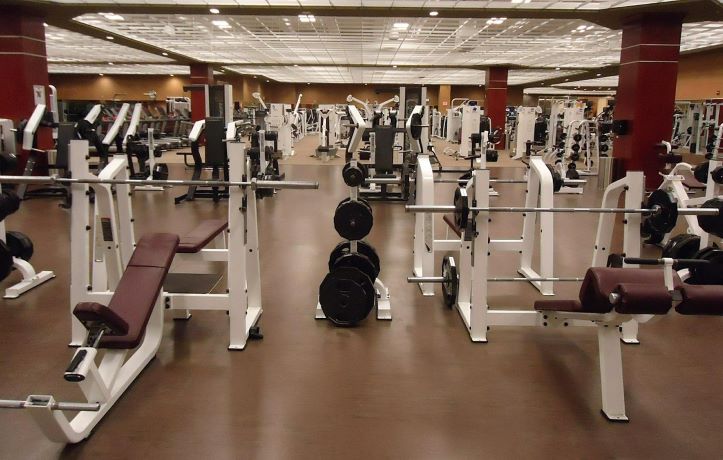Wondering about how to build muscle mass? Get ready to build some serious muscle! This journey will transform your biceps, triceps, and overall physique. Welcome to the ultimate guide on how to build muscle mass. we’ll explore the science of muscle growth, effective workouts, optimal nutrition, rest and recovery, and tracking your progress.
Prepare to transform your physique and unleash your full muscular potential! Let’s dive in and discover the secrets to building muscle like never before. Prepare yourself to witness astonishing outcomes.
Understand Muscle Growth Before Learning How to Build Muscle Mass
- Building muscle involves muscle fiber hypertrophy. During resistance training, like lifting weights or bodyweight exercises, small tears occur in your muscles.
- As these tears heal, the muscles adapt and grow stronger, leading to increased muscle mass over time.
- This adaptation occurs because your body synthesizes new muscle proteins in response to the stress placed on your muscles during exercise.
- Understanding this concept is crucial for creating effective workout routines and optimizing muscle growth. Get ready to design a routine that maximizes gains and helps you achieve your desired physique!
Importance Of Proper Nutrition And Rest For Muscle Recovery
| Nutrition | Rest |
| Provides essential nutrients for muscle repair | Allows for muscle tissue regeneration |
| Supports protein synthesis for muscle growth | Reduces muscle soreness and inflammation |
| Supplies energy for optimal workout performance | Enhances hormone balance for muscle development |
| Aids in maintaining a positive nitrogen balance | Enhances overall recovery and prevents burnout |
Designing an Effective Workout Routine
Creating an effective workout routine is vital for maximizing muscle growth and reaching your fitness objectives.
Focus on targeting major muscle groups and incorporating compound exercises like squats, deadlifts, and bench presses.
These exercises engage multiple muscles simultaneously, leading to significant gains. Gradually increase the intensity and volume of your workouts through progressive overload to continuously challenge your muscles.
Design a personalized routine that suits your goals and fitness level, and you’ll be on your way to achieving remarkable results.
Resistance Training Techniques
Variety is key when it comes to building muscle mass. Incorporating different resistance training techniques can yield fantastic results.
From weight lifting to bodyweight exercises and resistance bands, there are plenty of options available.
Weightlifting with barbells and dumbbells allows for progressive overload and targeting specific muscles.
Bodyweight exercises provide versatility and can be done anywhere. Resistance bands offer adjustable resistance levels and are great for muscle activation.
Trying out various techniques keeps your workouts engaging while effectively stimulating muscle growth and development. So, don’t be afraid to mix it up and find what works best for you.

Explain The Benefits And Considerations for Resistance Training Techniques
Each resistance training technique offers unique benefits and considerations. Here are some points to consider:
- Weightlifting: Builds overall strength, promotes muscle growth, and allows for precise weight control. However, it requires access to weights and proper form to prevent injuries.
- Bodyweight Exercises: Convenient and can be done anywhere, improve functional strength, and require little to no equipment. However, progression may be limited by bodyweight alone.
- Resistance Bands: Portable, versatile, and offer variable resistance levels. They can target specific muscles effectively, but may not provide as much resistance as weights.
Optimal Nutrition for Muscle Growth
Achieving optimal muscle growth requires a proper nutrition plan that supports muscle repair and development. Here are some key points to consider:
- Protein Intake: Consume an adequate amount of high-quality protein sources like lean meats, poultry, fish, dairy, legumes, and tofu to provide the necessary amino acids for muscle repair and synthesis.
- Caloric Surplus: Consume slightly more calories than your body needs to provide energy for workouts and support muscle growth. Focus on nutrient-dense foods to avoid excessive fat gain.
- Carbohydrates: Include complex carbohydrates such as whole grains, fruits, and vegetables to provide energy for intense workouts and aid in glycogen replenishment.
- Healthy Fats: Incorporate sources of healthy fats like avocados, nuts, seeds, and olive oil to support hormone production and overall health.
- Hydration: Drink plenty of water to maintain optimal muscle function and support nutrient delivery throughout the body. Gather more knowledge on what is the role of hydration in fitness.

Rest And Recovery
Rest and recovery are often overlooked but crucial aspects of building muscle mass. It’s important to resist the temptation to push yourself to the limit every day, as your body requires sufficient time for muscle fiber repair and rebuilding.
Here are a few key reminders to keep in mind:
- Get Sufficient Sleep: Make sure you get enough sleep by aiming for 7-9 hours of high-quality rest every night. During sleep, your body releases growth hormone, which aids in muscle repair and growth.
- Take Rest Days: Allow your muscles time to rest and recover between workouts. Overtraining can lead to muscle fatigue, increased risk of injury, and plateauing in your progress. Plan regular rest days or engage in light activities like stretching or low-intensity cardio on those days.
- Incorporate Active Recovery: Active recovery involves engaging in low-intensity activities that promote blood flow and reduce muscle soreness.
- Maintain Proper Nutrition: Ensure you’re consuming enough calories and nutrients to support muscle repair and growth.
- Listen to Your Body: Pay attention to signs of fatigue, excessive muscle soreness, or decreased performance. Adjust your training intensity or schedule if needed. Rest and recover
Supplement Guide
Supplements can be a valuable addition to your muscle-building journey, but it’s important to approach them with caution and proper understanding. While they aren’t necessary for everyone, certain supplements can support your goals. Here’s a brief guide to help you make informed choices:
- Protein Powders: Protein powders, such as whey, casein, or plant-based options, can be convenient sources of high-quality protein. They can aid in meeting your daily protein requirements, especially if you struggle to consume enough through whole foods.
- Creatine: Creatine is one of the most researched supplements and has shown to enhance strength and muscle mass gains. It can increase phosphocreatine levels in muscles, providing additional energy during intense workouts.
- Branched-Chain Amino Acids (BCAAs): BCAAs are essential amino acids that play a role in muscle protein synthesis. While they can be beneficial for certain situations, like fasted workouts or prolonged training sessions, they are not essential if you consume adequate protein through your diet
The Potential Benefits, Risks, And Proper Usage Of Each Supplement
| Supplement | Potential Benefits | Risks | Proper Usage |
| Protein Powders | – Convenient source of high-quality protein | – Allergies to specific protein sources | – Use as a supplement when unable to meet protein needs from diet |
| – Aid in meeting daily protein requirements | – Digestive discomfort in some individuals | – Mix with water or other preferred beverage | |
| Creatine | – Enhance strength and muscle mass gains | – Possible water retention and weight gain | – Follow loading and maintenance phase protocols |
| – Increase phosphocreatine levels in muscles | – May not be suitable for individuals with | – Stay adequately hydrated | |
| Branched-Chain Amino Acids (BCAAs) | – Aid in reducing exercise-induced muscle soreness | – May not be necessary if protein intake is adequate | – Take during or after workouts |
| – Support muscle protein synthesis | – Potential interactions with certain medications | – Consume as directed by the product instructions |
Tracking Progress and Adjustments
Tracking your progress is an important aspect of any fitness journey. It helps you understand how your efforts are paying off and enables you to make necessary adjustments to keep moving forward. Here are some effective methods to track your progress and make informed adjustments:
- Keep a Workout Journal: Maintain a journal to record your workouts, including exercises, sets, reps, and weights used. This allows you to track your performance over time and identify areas for improvement.
- Measure Body Composition: Regularly assess your body composition using methods like body weight, body fat percentage, or progress photos. These measurements provide insights into changes in muscle mass and overall physique.
- Assess Strength and Endurance: Test your strength and endurance periodically by performing exercises like bench press, squats, or timed runs. Tracking your progress in these areas helps gauge your overall fitness level.
- Listen to Your Body: Pay attention to how your body feels during and after workouts. Notice changes in energy levels, muscle soreness, and overall recovery. Adjust your training intensity or incorporate rest days if needed.
- Make Adjustments Gradually: Based on your progress and observations, make adjustments to your training program or nutrition gradually. Increasing weights, varying exercises, or adjusting macronutrient ratios can help overcome plateaus and stimulate further progress.
Conclusion
Building muscle requires dedication, consistency, and a well-designed plan. By setting clear goals, following a structured workout routine, considering appropriate supplements, and tracking progress, you can optimize your muscle-building efforts.
Listen to your body, make adjustments, and stay committed. Embrace the transformative power of building muscle and keep pushing forward.
FAQ
How long does it take to build muscle?
The timeline for building muscle can vary depending on various factors such as genetics, training intensity, nutrition, and consistency. Generally, noticeable muscle growth can be seen within a few months of consistent training and proper nutrition.
Do I need to lift heavy weights to build muscle?
Lifting heavy weights is one effective way to stimulate muscle growth, but it’s not the only approach. Resistance training using various weights and rep ranges can still promote muscle hypertrophy as long as the muscles are adequately challenged.
Can I build muscle without supplements?
Yes, building muscle is possible without supplements. A well-balanced diet that provides sufficient protein, carbohydrates, and fats, along with a proper workout routine, is crucial for muscle growth. Supplements can be helpful, but they are not mandatory.








